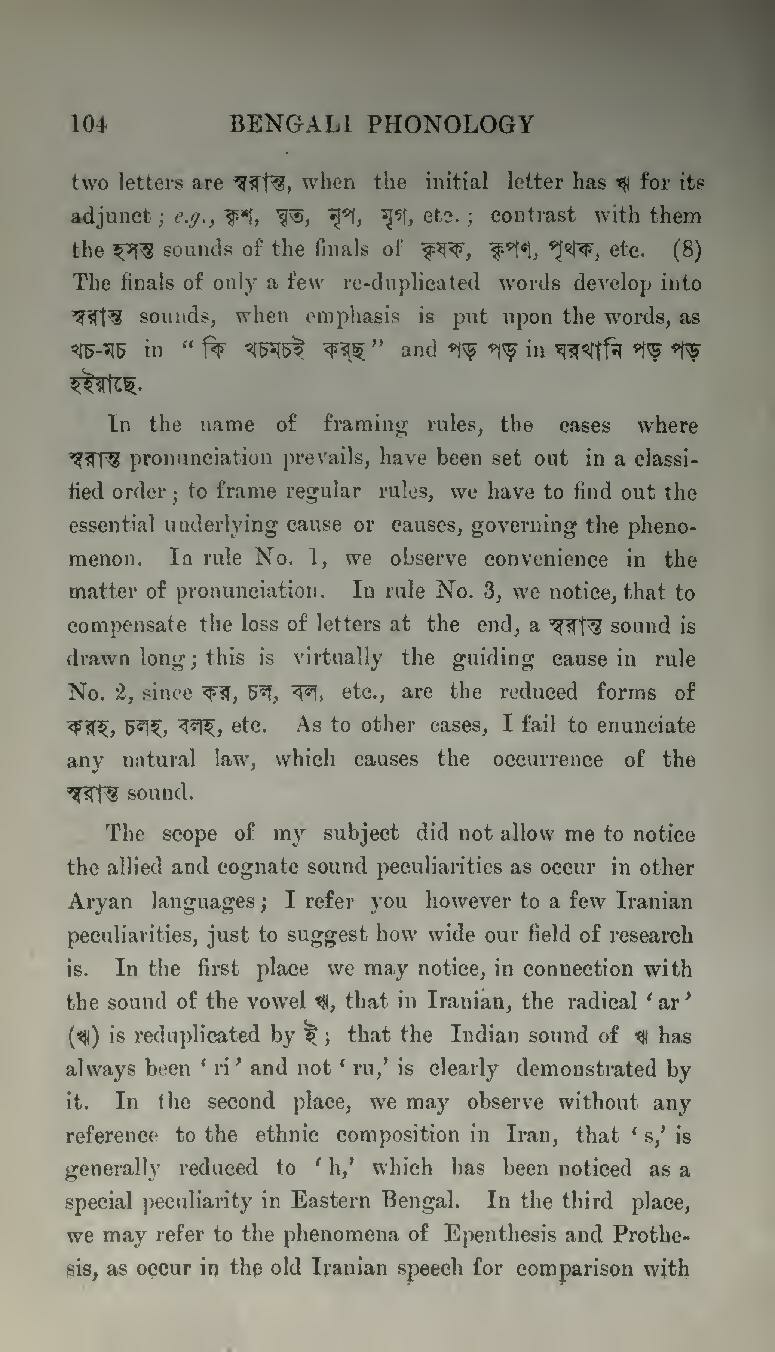two letters are স্বরান্ত, when the initial letter has ঋ for its adjunct; e.g., কৃশ, ঘৃত, নৃপ, মৃগ, etc.; contrast with them the হসন্ত sounds of the finals of কৃষক, কৃপণ, পৃথক, etc. (8) The finals of only a few re-duplicated words develop into স্বরান্ত sounds, when emphasis is put upon the words, as খচ-মচ in "কি খচ-মচই কর্ছ" and পড় পড় in ঘরখানি পড় পড় হইয়াছে.
In the name of framing rules, the cases where স্বরান্ত pronunciation prevails, have been set out in a classified order; to frame regular rules, we have to find out the essential underlying cause or causes, governing the phenomenon. In rule No. 1, we observe convenience in the matter of pronunciation. In rule No. 3, we notice, that to compensate the loss of letters at the end, a স্বরান্ত sound is drawn long; this is virtually the guiding cause in rule No. 2, since কর, চল, বল, etc., are the reduced forms of করহ, চলহ, বলহ, etc. As to other eases, I fail to enunciate any natural law, which causes the occurrence of the স্বরান্ত sound.
The scope of my subject did not allow me to notice the allied and cognate sound peculiarities as occur in other Aryan languages; I refer you however to a few Iranian peculiarities, just to suggest how wide our field of research is. In the first place we may notice, in connection with the sound of the vowel ঋ, that in Iranian, the radical 'ar' (ঋ) is reduplicated by ই; that the Indian sound of ঋ has always been 'ri' and not 'ru,' is clearly demonstrated by it. In the second place, we may observe without any reference to the ethnic composition in Iran, that 's,' is generally reduced to 'h,' which has been noticed as a special peculiarity in Eastern Bengal. In the third place, we may refer to the phenomena of Epenthesis and Prothesis, as occur in the old Iranian speech for comparison with
